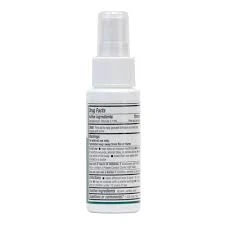Exploring Different Kinds of Flocculants Used in Water Treatment Processes
Types of Flocculants in Water Treatment
Water treatment is a critical process in ensuring the availability of clean and safe water for human consumption and industrial use. One of the key methods employed in water treatment is flocculation, a process that enhances the removal of suspended particles from water. Flocculants are chemicals that facilitate this process by promoting the aggregation of small particles into larger clusters, or flocs, making them easier to remove. In this article, we will explore the different types of flocculants used in water treatment and their respective applications.
1. Organic Flocculants
Organic flocculants are among the most commonly used agents in water treatment and can be further classified into natural and synthetic categories.
Natural Flocculants
Natural flocculants are derived from plant or animal sources. Common examples include
- Starch Often modified, starches can absorb water and create a gel-like substance that aids in the agglomeration of particles. - Chitosan Derived from chitin in crustacean shells, chitosan possesses cationic properties that attract negatively charged particles, making it effective in clarifying water. - Alginate Extracted from brown seaweed, alginates have the ability to form gels in the presence of divalent cations, thus helping in the sedimentation of particles.
Natural flocculants are favored for being eco-friendly and biodegradable, making them suitable for applications where environmental impact is a concern.
Synthetic Flocculants
Synthetic flocculants are man-made chemicals, typically derived from polyacrylamide. These substances are engineered to enhance their flocculating properties. They are usually classified based on their charge
types of flocculants in water treatment

- Cationic Polyacrylamides Positively charged, these flocculants are effective in treating municipal wastewater that contains negatively charged colloidal materials. - Anionic Polyacrylamides With a negative charge, anionic flocculants are used in various applications, including mineral processing and others where anionic particles predominate. - Nonionic Polyacrylamides These flocculants can be utilized in water treatment processes where charge neutralization is required but both positive and negative charges exist.
Each type of synthetic flocculant has specific applications depending on the characteristics of the water being treated and the type of contaminants present.
2. Inorganic Flocculants
Inorganic flocculants, primarily composed of metallic salts, are also widely used in water treatment processes. The most common inorganic flocculants include
- Aluminum Sulfate (Alum) One of the most widely used flocculants, alum operates effectively by neutralizing the charge on particles, allowing them to aggregate and settle. It is particularly effective in drinking water treatment. - Ferric Chloride This flocculant is particularly effective for wastewater treatment. It works by hydrolyzing in water and forming ferric hydroxide, which precipitates and entraps suspended materials. - Polymeric Ferric Sulfate (PFS) A newer formulation that offers enhanced flocculation and sedimentation properties compared to traditional ferric salts.
Inorganic flocculants are often cost-effective and can result in higher settling rates of flocs.
3. Biopolymer Flocculants
Emerging as a sustainable alternative, biopolymer flocculants are developed from renewable resources and are biodegradable. They are derived from polysaccharides and proteins, and their utilization in water treatment is gaining attention due to their effectiveness in reducing environmental impacts.
Conclusion
Flocculants play a crucial role in the water treatment process by facilitating the removal of suspended solids, thereby improving water quality. The choice of flocculant depends on various factors, including the nature of the pollutants, economic considerations, and regulatory requirements. With an increasing emphasis on sustainability, the development and use of natural and biodegradable flocculants are likely to become more prominent in the future of water treatment. As industries seek to balance efficiency with environmental responsibility, understanding and selecting the appropriate flocculants will be fundamental in achieving optimal water treatment outcomes.
-
Water Treatment with Flocculant Water TreatmentNewsJun.12,2025
-
Polymaleic AnhydrideNewsJun.12,2025
-
Polyaspartic AcidNewsJun.12,2025
-
Enhance Industrial Processes with IsothiazolinonesNewsJun.12,2025
-
Enhance Industrial Processes with PBTCA SolutionsNewsJun.12,2025
-
Dodecyldimethylbenzylammonium Chloride SolutionsNewsJun.12,2025





